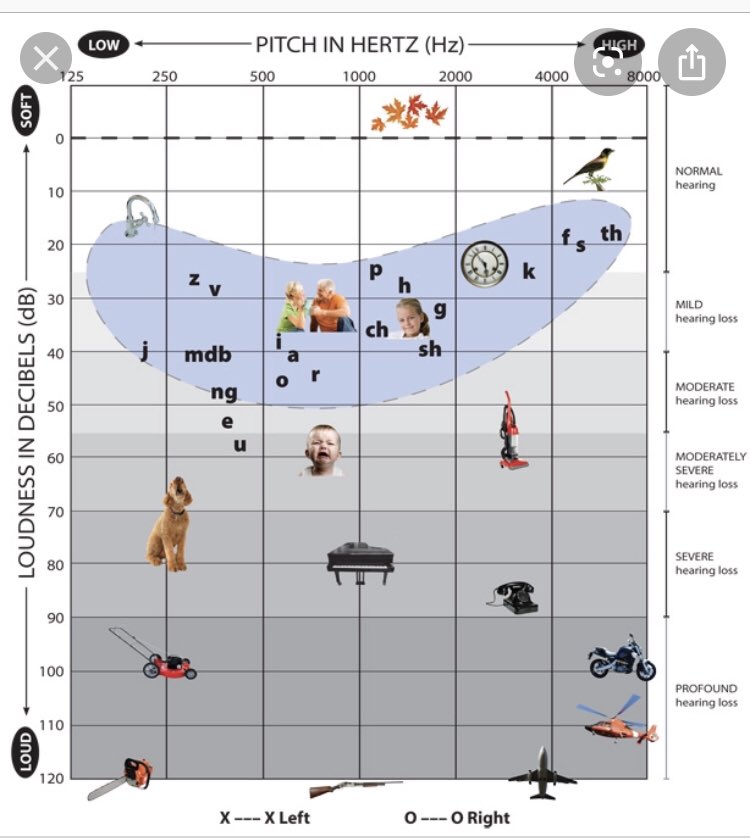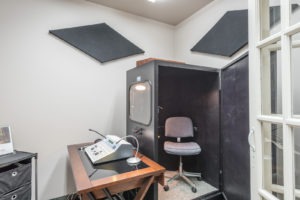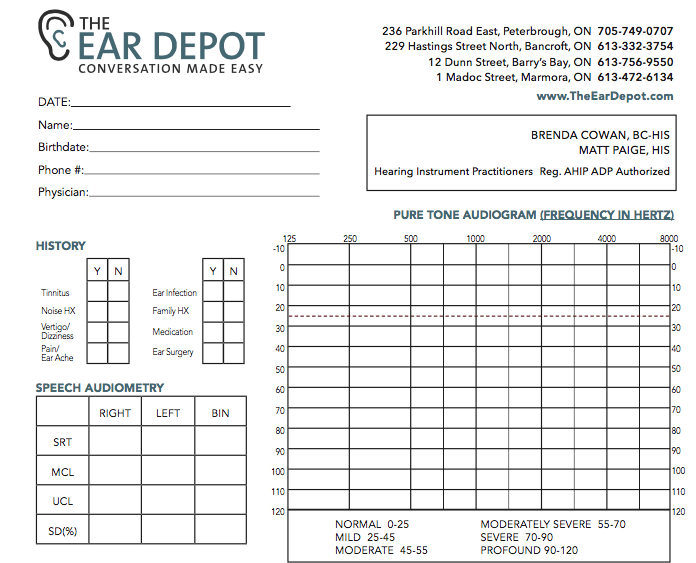What Does my Audiogram Mean?
What Does my Audiogram Mean? In Canada, 19% of our 35 million population have hearing loss (Statistics Canada, 2013), and many more than that have their hearing tested regularly. So what does the audiogram mean? What information does it give me about my hearing? Well, here's a short explanation for you and what your audiogram means. What is an Audiogram? An audiogram is a graph used in audiology to plot your hearing levels. On this graph, you'll see the vertical line we call decibels (dB) and the horizontal line for frequency (hertz - Hz). Decibels are the units of volume or loudness used in audiology. Quiet sounds are at the top of the graph and as you go down the louder the sound is. Frequency is the pitch of the sound with low pitch on the left and high pitch on the right. We examine several frequencies from 250 to 8,000 hertz; this captures all the sounds in human speech and more. During a hearing test, we use this graph to chart how you respond to beeps at each frequency as we raise and lower the volume. Each ear is given a symbol, O for your right ear and X for your left. We'll look at these more in the next section. Information is on the Audiogram? After the hearing test is done, there are several important things to look at. First, we look at the responses of your right and left ear. Depending on where they fall on the graph...




Recent Comments